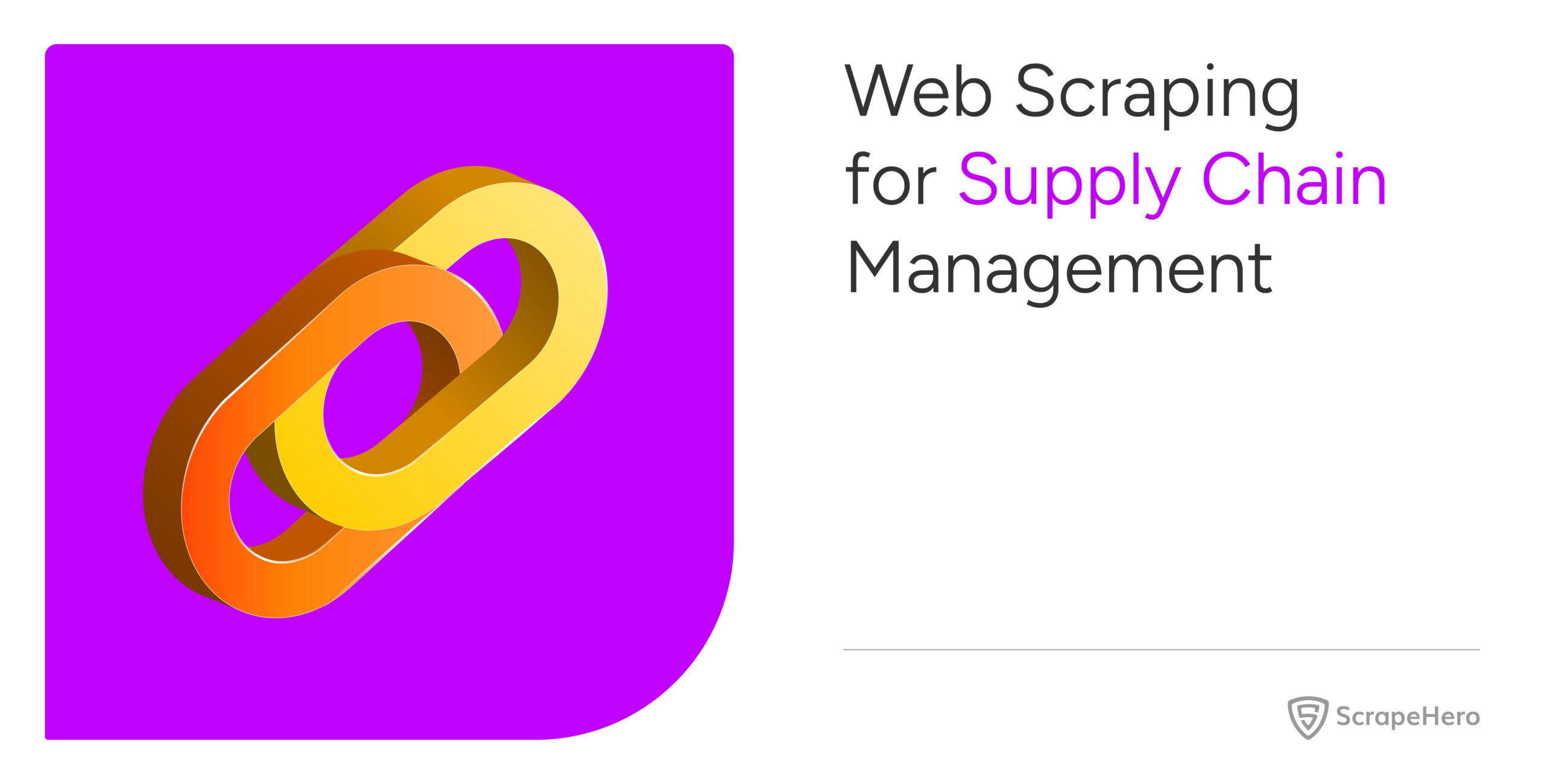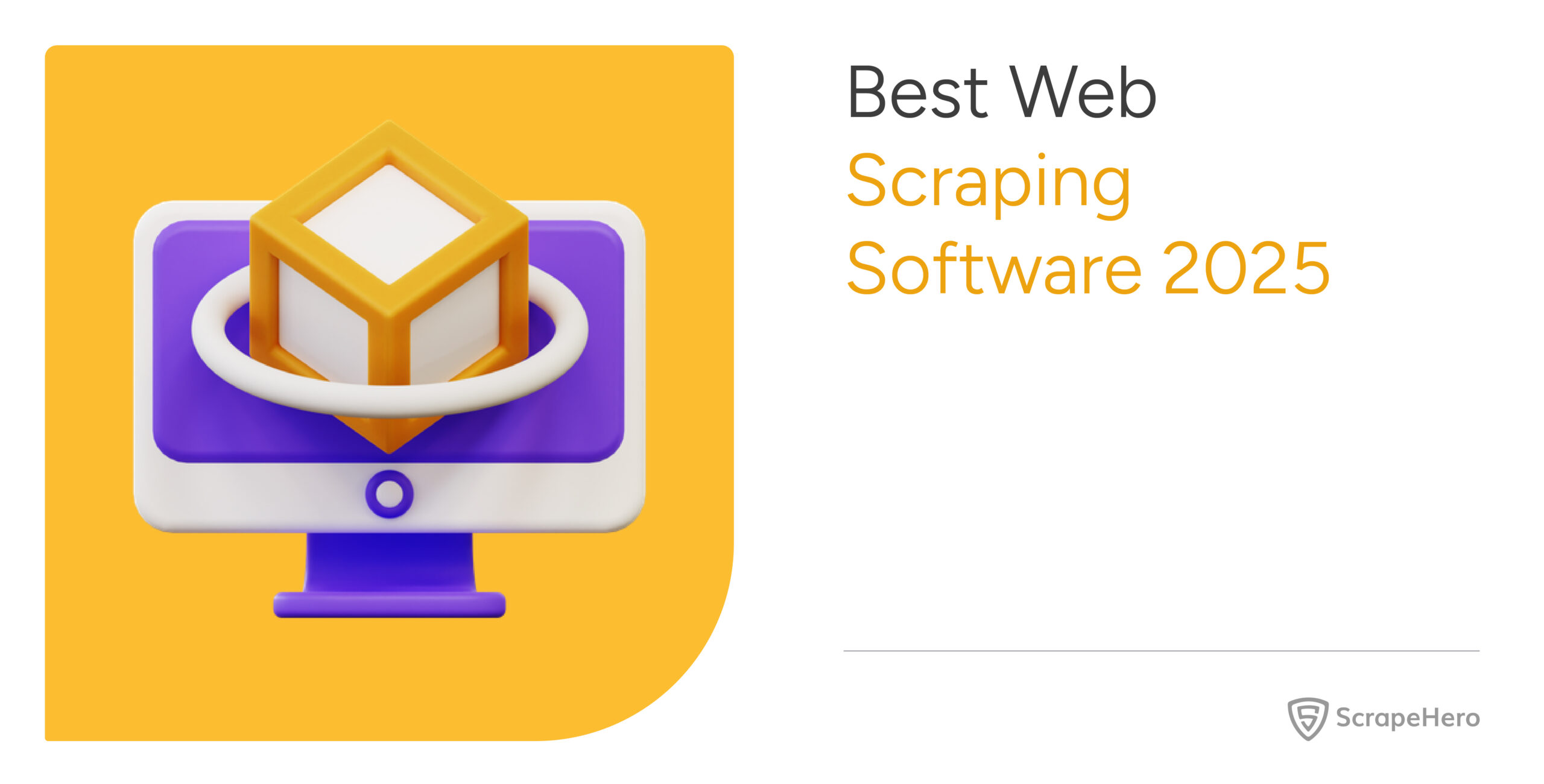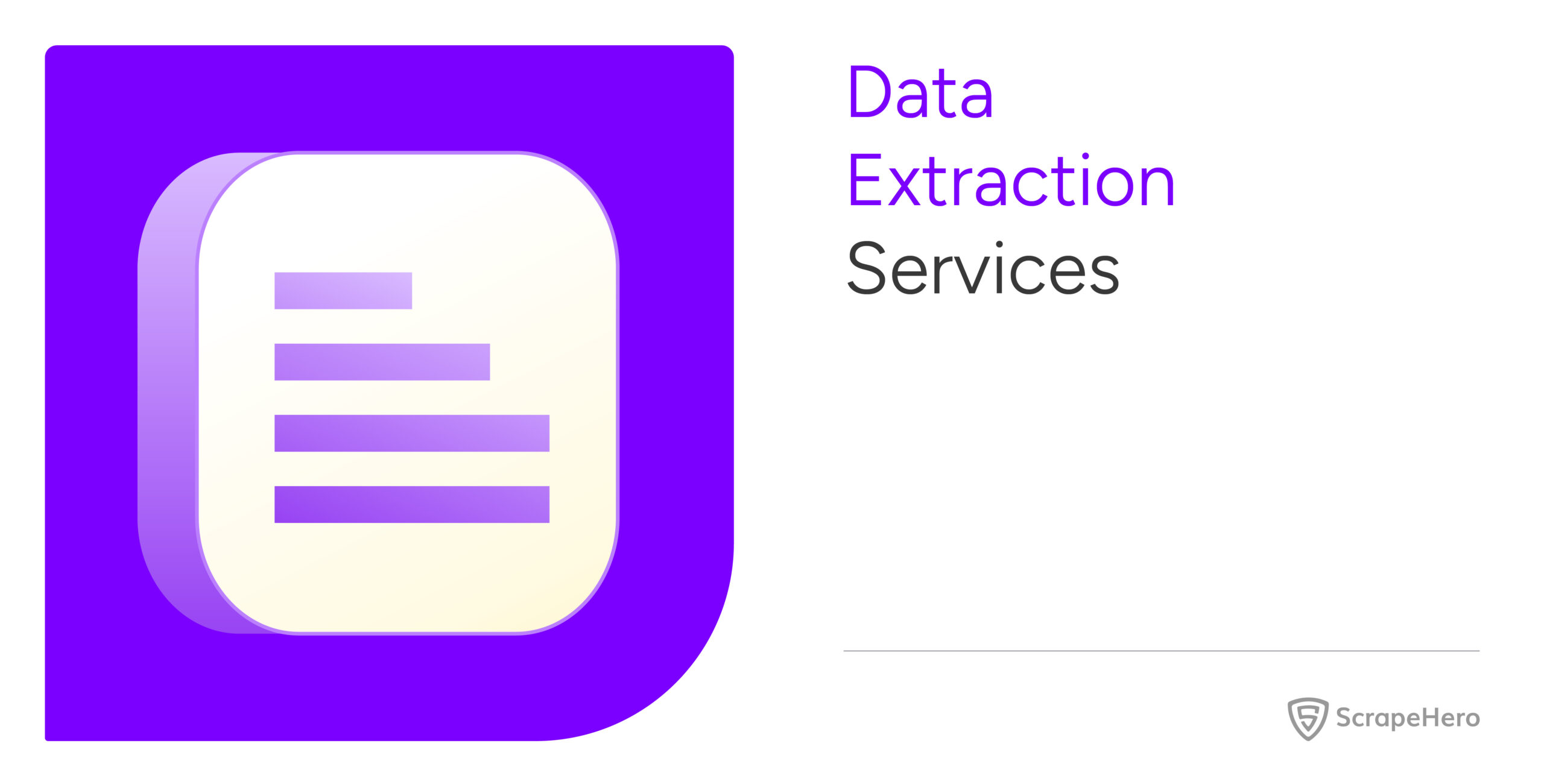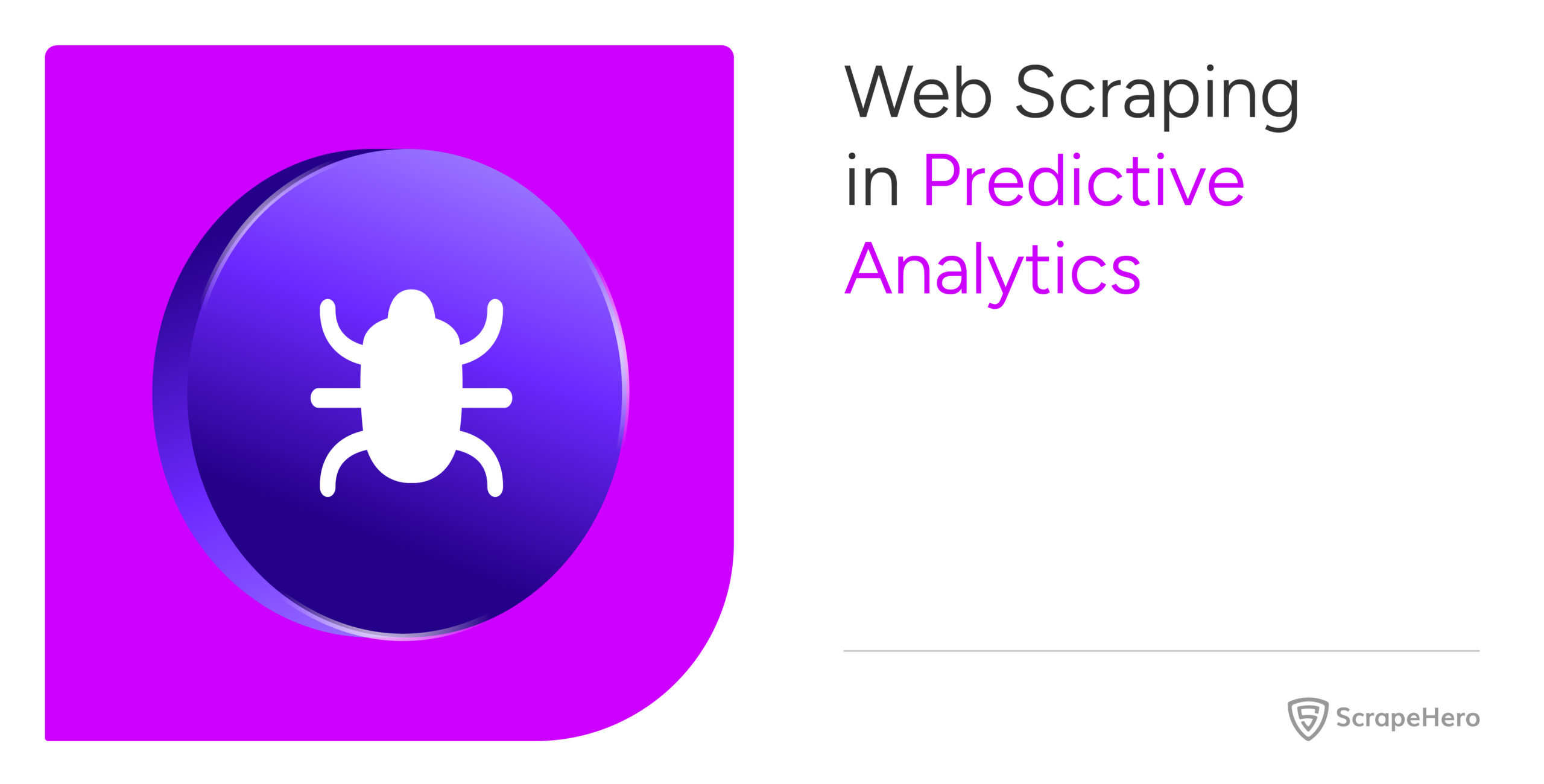Remember how the COVID-19 pandemic disrupted the global supply chain?
Before the pandemic, supply chain management was generally effective but mainly relied on traditional methods that didn’t incorporate real-time data.
Many companies did not fully utilize web scraping for supply chain management, which could have provided them with timely insights during crises.
The challenges brought on by lockdowns, shipping delays, and workforce shortages led to widespread shortages of goods and raw materials.
This situation revealed the gaps in the operations and prompted a search for more efficient solutions.
Many companies began to explore web scraping to gather crucial data on pricing, inventory levels, and market trends, aiming to build resilience against future disruptions.
Regardless of external crises, businesses need web scraping for effective supply chain management to navigate daily challenges without compromising profits.
Continue reading to understand how web scraping can be effectively utilized at every stage of your company’s supply chain management.
Are you looking for a reliable web scraping partner to take care of your supply chain data requirements? ScrapeHero web scraping service is an expert in the field.
Don’t want to code? ScrapeHero Cloud is exactly what you need.
With ScrapeHero Cloud, you can download data in just two clicks!
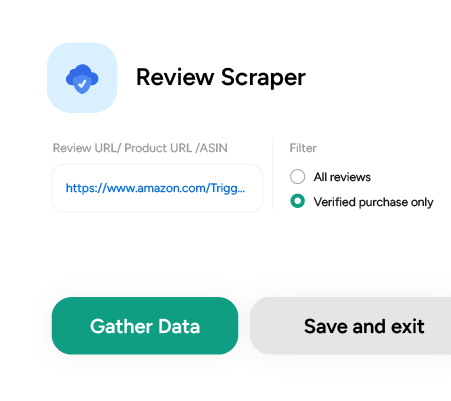
Why You Need Web Scraping at Procurement Level
Procurement teams often grapple with managing supplier relationships effectively.
The limited visibility into pricing, inconsistent performance metrics, and outdated methods can make decisions challenging.
However, adopting web scraping at the procurement level can significantly alleviate these challenges.
At the procurement level, adopting web scraping can have the following benefits:
1. Automate Price Comparison: Web scraping helps procurement teams find the best deals easily by continuously tracking prices from various suppliers.
2. Evaluate Supplier Performance: Web scraping allows teams to gather reviews and ratings from public sources or supplier platforms.
This data helps them assess the reliability and delivery performance of their suppliers, helping them choose the better supplier.
If your list of suppliers is listed on Google, you can use the ScrapeHero Google Review Scraper to gather their reviews and then compare them to find the best one.
3. Monitor Global Price Trends: By scraping material prices from different regions over time, procurement teams can track global price trends.
This information is essential for adjusting sourcing strategies and anticipating possible market changes.
For example, if you are a pharmaceutical company, you might have to scrape pricing and performance data from raw material suppliers worldwide.
Then, you can use this data to compare prices, track vendor ratings for on-time delivery and quality, and select the most reliable suppliers with minimal costs.
Importance of Web Scraping at Production Level
One major issue production teams face is inconsistent raw material availability.
When raw materials are not readily available, they can lead to delays in production or even stockouts. This not only disrupts operations but can also affect customer satisfaction.
Additionally, over-ordering or under-ordering materials can create further complications. Over-ordering ties up valuable resources and increases storage costs.
On the other hand, under-ordering can halt production, leading to missed deadlines and lost revenue.
The following are the benefits you will have at the production level by adopting web scraping:
1. Accurate Forecasting: Web scraping allows teams to gather real-time data on stock levels and price changes from various suppliers.
This information helps in demand forecasting, enabling companies to make efficient purchasing decisions.
2. Monitor Material Availability: Production teams can ensure a steady supply of raw materials by tracking stock availability through web scraping.
This proactive approach helps avoid production delays and keeps operations running smoothly.
3. Anticipate Market Shifts: Web scraping can also be used to analyze consumer demand trends and monitor competitor production data.
By understanding these shifts, companies can adjust their manufacturing plans accordingly, staying ahead of the competition and feeling prepared.
Why Employ Web Scraping at Distribution Level
Difficulties in the distribution part of supply chain management can disrupt the supply chain.
When shipping delays occur, they can cause a ripple effect throughout the supply chain. Products may not reach retailers on time, leading to empty shelves and lost sales opportunities.
High transportation costs can also strain budgets, forcing companies to make difficult decisions about pricing or inventory.
How web scraping helps at the distribution level:
1. Real-Time Monitoring: Web scraping allows companies to gather data from logistics provider websites.
This enables them to track real-time shipping statuses and delivery times.
With this information, teams can stay informed about their shipments and make timely adjustments.
2. Optimize Shipping Costs: By scraping shipping rates from various carriers, companies can identify the most cost-effective delivery options.
This helps them save money while ensuring that products reach their destinations on time.
3. Anticipate Disruptions: Web scraping can also be used to monitor logistics news and data for potential disruptions.
Events like port closures or strikes can significantly impact shipping schedules.
You can keep track of events like these by regularly scraping global news using a News API.
Take a global apparel retailer that scrapes delivery schedules and logistics reports from major carriers such as UPS and FedEx.
By analyzing this data, they can anticipate delays during peak seasons, such as holidays or sales events.
This foresight allows them to adjust their shipping plans accordingly, ensuring that stores remain stocked and customers are satisfied.
Benefits of Web Scraping at Retail Level
At the retail level, businesses often struggle to stay competitive in the market.
When businesses are unaware of how their competitors are pricing similar products or how much stock they have, they risk setting their prices too high or too low.
This can result in lost customers who find better deals elsewhere.
Additionally, if a competitor has a higher stock level for popular items, it can lead to missed sales for businesses that run out of inventory.
Listed below are the benefits businesses will have by utilizing web scraping at the retail level:
1. Competitor Monitoring: With web scraping, businesses can gather real-time data from competitors’ websites.
By tracking pricing and stock levels, companies can stay ahead of market shifts and make timely adjustments to their strategies.
2. Adjust Pricing Dynamically: With the data collected through scraping, businesses can adjust their own pricing and promotions in response to competitor behavior.
This flexibility allows them to remain competitive and attract more customers.
3. Improve Inventory Allocation: Monitoring competitor stock levels helps businesses make better decisions about where to place their inventory and when to replenish it.
If you want to gather and consolidate product data from websites like Amazon, eBay, Walmart, Target and other marketplaces, you can easily do it with ScrapeHero’s Price Monitoring Service.
How Web Scraping Helps at Your Customer Feedback Level
Companies often lack insight into product issues that arise from customer feedback.
Without understanding what customers think about their products, businesses can miss opportunities for improvement.
The following are the benefits of utilizing web scraping at the customer feedback level:
1. Track Customer Sentiment: Web scraping allows companies to gather data from product reviews and ratings across various platforms.
By analyzing this information, businesses can gain insights into what customers like or dislike. This understanding is crucial for making informed decisions.
For instance, while we almost always understand discounts as a good marketing strategy that can be used to sell off products, sentiment analysis of Walmart sunscreen reviews gave an interesting insight.
While more people expressed a positive attitude towards the different discount ranges on the sunscreens on Walmart, a small but significant percentage of people were unhappy.
This could mean that customers don’t always prefer big discounts. They might care more about the quality of the product rather than just the discount.
However, since the percentage of negative sentiment is relatively low across all discount ranges, it could also indicate that customers are not typically disappointed with the sunscreens they are buying at a discount on Walmart.
This is customers telling the sunscreen brands that they would choose quality over discount but likes to purchase quality products in discount.
2. Anticipate Demand: By scraping reviews and search trends, companies can forecast which products are likely to be in high demand.
This enables better inventory planning, ensuring that popular items are available when customers want them.
For instance, read here in our Google Review Analysis of Wendy’s how Hamburger enjoys a notably positive sentiment among Wendy’s popular food items in Houston.
With a striking 74.32% of customers expressing a positive opinion, Wendy’s in Houston might want to keep their stock of Hamburgers ready during peak hours.
3. Identify Product Issues Early: Scraping review data helps businesses spot recurring complaints, such as issues with product quality or sizing.
By identifying these problems early, companies can make proactive improvements to their products, enhancing customer satisfaction.
Web Scraping for Supply Chain Management: What About the Data?
Now that we know the role of web scraping in supply chain management, let us understand what data needs to be extracted and where this data can be gathered.
Types of Data That Needs to be Scraped for Supply Chain Management
- Pricing Data: Competitor prices, supplier quotes, and material costs.
- Inventory Levels: Stock availability from suppliers and competitors to manage procurement and avoid stockouts.
- Shipping & Logistics Data: Delivery schedules, shipping costs, and route information to optimize transportation.
- Customer Reviews: Insights from product reviews to forecast demand and improve product development.
- Supplier Reviews and Ratings: Vendor reliability and performance for better partnerships.
- Market Trends: Consumer preferences, seasonal demand, and emerging market shifts.
- Compliance Data: Regulatory updates on trade policies, import/export restrictions, and product standards.
Data Sources for Web Scraping for Supply Chain Management
- E-commerce Platforms: Amazon, Walmart, and Target for competitor pricing, stock availability, and customer feedback.
- Supplier Websites: Material prices, stock levels, and vendor performance reviews.
- Logistics Providers: UPS, FedEx, and DHL for real-time delivery updates and shipping costs.
- Review Sites: Trustpilot, Google Reviews, and customer feedback on e-commerce platforms.
- News, Government, and Industry Sites: Reports on supply chain disruptions, trade regulations, and market forecasts.
Web Scraping for Supply Chain Management: How to Gather this Data?
Utilizing web scraping for supply chain management can significantly reduce costs by providing businesses with insights into pricing, inventory levels, and market trends.
By automating the data collection process, companies can optimize their procurement strategies, negotiate better deals with suppliers, and avoid overstocking or stockouts.
However, collecting data for supply chain management effectively requires expertise in web scraping.
While some companies might think about developing their own web scraping solutions, it’s often more efficient to partner with a professional service like ScrapeHero.
Here’s why:
1. Scalability and Automation
Supply chain management requires vast amounts of data from suppliers, competitors, logistics providers, and market trends.
Manually scraping this data or using in-house tools can become overwhelming as data volume grows.
ScrapeHero’s web scraping service is built to handle large-scale data extraction efficiently.
2. Data Accuracy and Freshness
Supply chains are dynamic environments. Outdated or inaccurate data can lead to poor decisions, such as overstocking or understocking.
ScrapeHero ensures data accuracy with robust scraping pipelines.
This will provide real-time information on pricing, inventory levels, and market trends, helping businesses optimize their operations.
3. Handling Complex Websites and Anti-Scraping Measures
Web scraping can be complicated. Many websites use anti-scraping technologies like CAPTCHA or IP blocking.
Building in-house scrapers that bypass these measures requires significant technical expertise and resources.
ScrapeHero specializes in navigating complex websites, ensuring uninterrupted access to the needed data.
4. Compliance With Legal and Ethical Standards
Web scraping must be done ethically and in compliance with local laws, including website terms of service.
In-house teams may lack the legal knowledge to ensure compliance, risking penalties or legal challenges.
ScrapeHero’s experience in navigating legal environments ensures all activities are performed within the law, reducing risk for businesses.
5. Cost-Effectiveness
Creating and maintaining an in-house web scraping solution can be costly.
Expenses for hiring developers, purchasing infrastructure, and ongoing maintenance can add up quickly.
ScrapeHero offers an all-in-one solution that manages the entire data pipeline at a fraction of the cost of an in-house setup.
This allows businesses to save time and money while focusing on core operations.
6. Customization and Flexibility
ScrapeHero tailors our services to meet each business’s specific needs.
Whether you need competitor pricing data, supplier stock levels, or shipping logistics, ScrapeHero customizes the scraping process accordingly.
In contrast, internal solutions may limit adaptability due to team capabilities.
7. End-to-End Solutions
Beyond web scraping, ScrapeHero provides complete data pipeline management, including cleaning, formatting, and integration with existing systems.
This ensures that collected data is accurate and ready for use in decision-making tools like ERP or SCM systems.
Companies using in-house solutions often spend extra time processing data, complicating supply chain management.
Web Scraping for Supply Chain Management With ScrapeHero
Managing an efficient supply chain requires access to accurate, real-time data from multiple sources. But, building and maintaining your own web scraping solution is resource-intensive and risky due to its complexities.
Partner with ScrapeHero to efficiently monitor your supply chain management instead of spending time on managing data collection.

